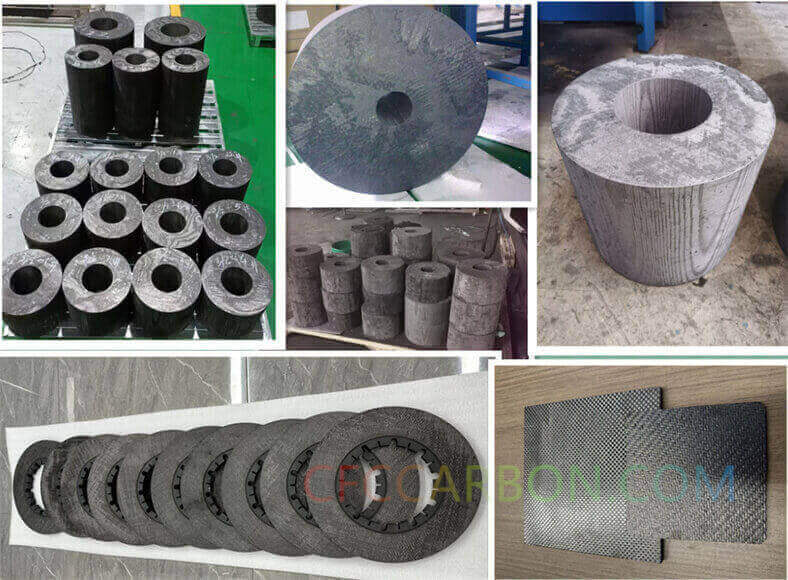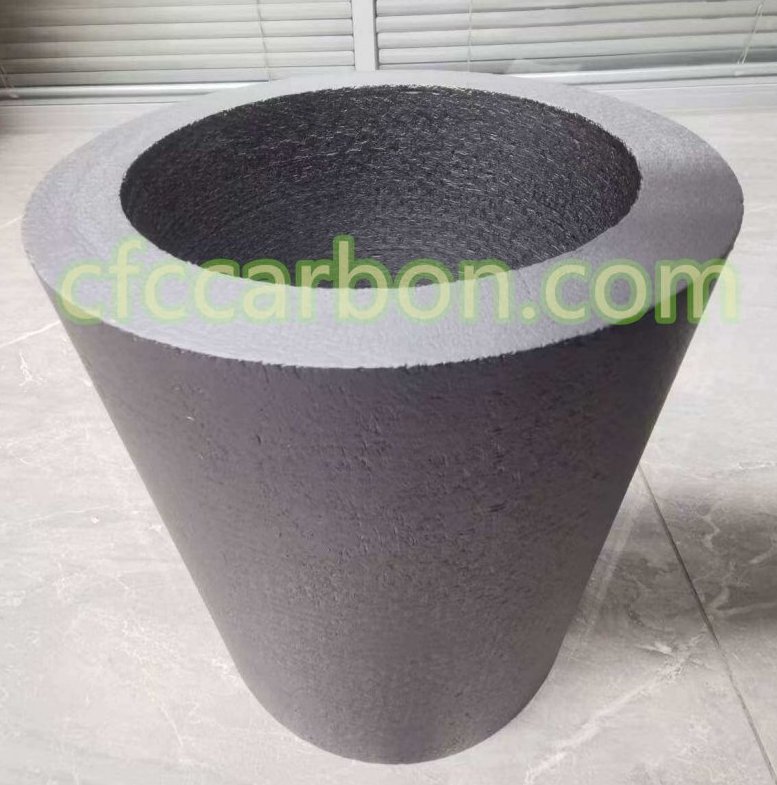Experimental Investigation of Isothermal Oxidation Kinetics in Carbon-Carbon Composites: Implications for High-Temperature Applications
By CFCCARBON R&D Team | May 18, 2025
1. What Are Carbon-Carbon Composites?

3D 4D carbon fiber composite material manufacturer factory -airplane brake disc plates sheets U L profiles-2D(s)
Carbon-carbon composites (C/C composites) are advanced materials composed of carbon fibers embedded in a carbon matrix. Renowned for their exceptional thermal stability (>2,500°C in inert environments), low density (1.4–1.95 g/cm³), and resistance to thermal shock, they are widely used in aerospace, nuclear reactors, and high-performance braking systems. Isothermal oxidation refers to the study of material degradation under constant temperatures in oxidative environments, critical for predicting component lifetimes in extreme conditions.
2. Key Features and Applications of C/C Composites
Production and Classification
C/C composites are manufactured via two primary methods:
-
Chemical Vapor Infiltration (CVI): Enhances density by depositing pyrolytic carbon into porous preforms.
-
Liquid Impregnation: Uses thermosetting resins or pitch precursors, followed by carbonization cycles.
Common structural classifications include: -
2D/2.5D: Layered fabrics for aircraft brakes (e.g., 2.5D composites with interlaminar fibers for improved shear strength).
-
3D/4D: Multidirectional weaves for rocket nozzles and thermal protection systems.
Performance Advantages
-
Oxidation Resistance: SiC additives form protective SiO₂ layers at >1,000°C, mitigating weight loss.

SiC coating carbon fiber composite material-CC-CFC (2)
-
Mechanical Integrity: Retains 140 MPa bending strength and 180 MPa compressive strength even at 2,000°C.
-
Lightweight Design: 40% lighter than steel, improving fuel efficiency in aerospace applications.
3. Experimental Study: Isothermal Oxidation Kinetics
Methodology
A systematic investigation was conducted to evaluate oxidation behaviors of uncoated and coated C/C composites under controlled conditions:
-
Temperature Range: 300–1,450°C, using ultra-high-purity O₂ and water vapor-enriched environments.
-
Sample Specifications:
-
Uncoated: Two sizes standardized (7.8 cm² and 2.4 cm² surface areas).
-
Coated: Larger specimens (14 cm²) to minimize edge effects.
-
-
Equipment: Cahn RH-100/2000 microbalances for real-time weight change monitoring.
Key Observations
-
Low-Temperature Regime (300–800°C):
-
Dominated by carbon oxidation (C + O₂ → CO/CO₂), leading to linear mass loss.
-
Gas flow rates (14–550 cc/min) influenced reaction kinetics, with higher velocities accelerating degradation.
-
-
High-Temperature Regime (1,000–1,450°C):
-
Passive oxidation of SiC additives formed protective SiO₂ scales, reducing mass loss rates.
-
Coated samples exhibited 30% lower weight loss compared to uncoated variants under identical conditions.
-
-
Humidity Effects:
-
Water vapor intensified oxidation, particularly in uninhibited composites, highlighting the need for advanced protective coatings10.
-
4. Industrial Implications and Innovations
This study aligns with CFCCARBON’s development of 3D C/C composites (density: 1.7–1.9 g/cm³) for next-gen aircraft brakes and rocket nozzles12. Key advancements include:
-
Coating Technologies: Multi-layer SiC/ZrB₂ coatings to extend service life in oxidative atmospheres.
-
Process Optimization: Reduced densification cycles via high-pressure impregnation (HIP), lowering production costs by 15%.
5. Conclusion
Understanding isothermal oxidation kinetics is vital for designing durable C/C composites. By integrating experimental data with industrial manufacturing insights, this research paves the way for materials capable of withstanding extreme environments in aerospace and energy sectors. For detailed product specifications, visit CFCCARBON’s official website.
related news /articles:
Oxidation kinetics and mechanisms of a 2D C/C composite (1)
Isothermal oxidation kinetics of coated carbon-carbon composites
Experimental investigation of thermal shock effects on carbon-carbon composites
An chemical kinetic model for the C/C composite pyrolysis process (1)